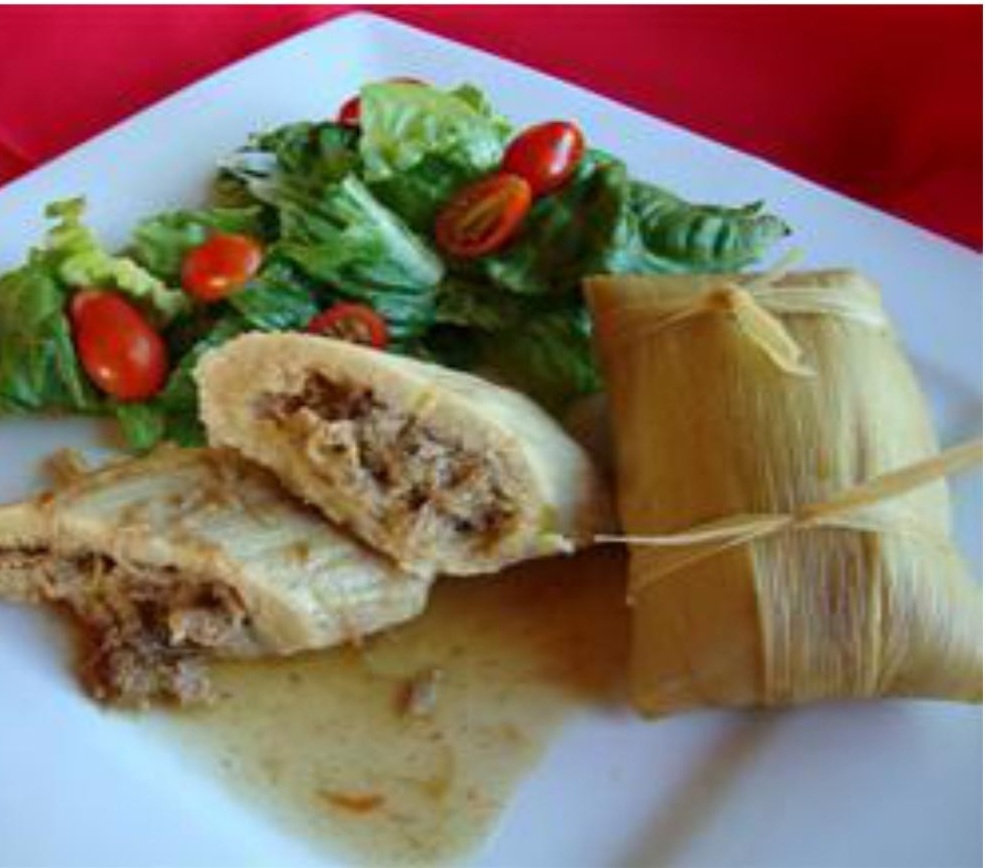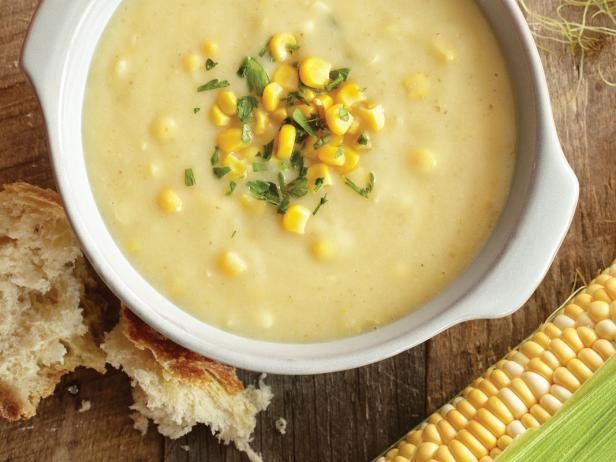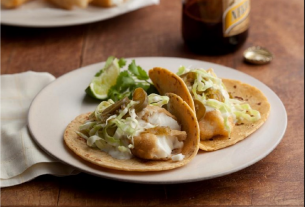By Manzanillo Sun Writer From the January 2017 Edition
Ponche is a warm tropical-fruit punch. It’s traditionally imbibed in Mexico during Christmastime. Vendors sell 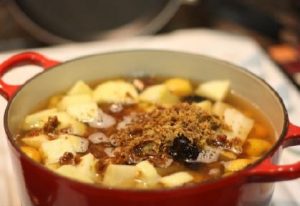 it at night near the sidewalk Christmas markets. It’s also served with buñuelos during the posadas. No one seems to know exactly how and why Mexican ponche materialized. In general, historians seem to agree that the punch concept originated in India, where English sailors took a liking to it and brought to Europe. The Spaniards (or the French?) must have carried the tradition to Mexico. Today, the base of Mexican ponche comprises piloncillo, a dark-brown unrefined cane sugar, mixed with water and cinnamon sticks. To that, you can add pretty much any winter fruits you want: apples, oranges, guavas, tejocotes. The latter two are key. Tejocotes are small, speckled orange fruits with an apple-pear taste, and their soft flesh turns almost creamy while soaking in the ponche. Guavas lend just the right amount of tang and citrusy perfume. The smell of guavas cooking with cinnamon and sugar is intoxicating. Someday someone’s going to make a million dollars selling it to Williams Sonoma as an air freshener.
it at night near the sidewalk Christmas markets. It’s also served with buñuelos during the posadas. No one seems to know exactly how and why Mexican ponche materialized. In general, historians seem to agree that the punch concept originated in India, where English sailors took a liking to it and brought to Europe. The Spaniards (or the French?) must have carried the tradition to Mexico. Today, the base of Mexican ponche comprises piloncillo, a dark-brown unrefined cane sugar, mixed with water and cinnamon sticks. To that, you can add pretty much any winter fruits you want: apples, oranges, guavas, tejocotes. The latter two are key. Tejocotes are small, speckled orange fruits with an apple-pear taste, and their soft flesh turns almost creamy while soaking in the ponche. Guavas lend just the right amount of tang and citrusy perfume. The smell of guavas cooking with cinnamon and sugar is intoxicating. Someday someone’s going to make a million dollars selling it to Williams Sonoma as an air freshener.
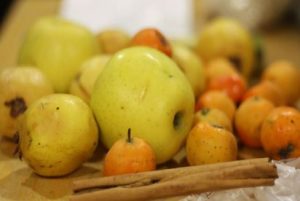 In addition to the fresh fruit, ponche can contain prunes, raisins, tamarind, walnuts. Some folks add hibiscus flowers, which gives the ponche a pretty burgundy color. Ponche isn’t an exact science. Everything simmers together until the fruit is tender, and the dried fruits become plump, sugar-swollen nuggets. If you are like me, you will hover over the pan and give yourself a ponche facial, letting that sweet, spicy steam envelope your face.
In addition to the fresh fruit, ponche can contain prunes, raisins, tamarind, walnuts. Some folks add hibiscus flowers, which gives the ponche a pretty burgundy color. Ponche isn’t an exact science. Everything simmers together until the fruit is tender, and the dried fruits become plump, sugar-swollen nuggets. If you are like me, you will hover over the pan and give yourself a ponche facial, letting that sweet, spicy steam envelope your face.
Ponche has a lot of ingredients, but it requires minimal chop ping. If you have a helper, the whole thing can be on the stove within 20 minutes. If you like — and we do, in our house a little nip of brandy, rum or tequila, feel free to add it in. Just make sure to serve the cups with a spoon, so everyone can dig into their boozy (or not) fruits.
Ponche Adapted from Fany Gerson’s My Sweet Mexico Makes about 3 1/2 quarts Note: You shouldn’t feel wedded to any ponche recipe, as the ratios can be tweaked for your specific tastes.
Fany’s version includes tamarind, raisins and prunes, but I found the original quantities to be a little too tangy, so I lessened them and added more water. In the future, I may leave out the prunes all together.
If you don’t have piloncillo, you can substitute brown sugar. If you can’t find sugar cane, just leave it out. The amount of water depends on how thick you like your ponche. Once the fruit starts to cook, the mixture will thicken feel free to add more water to thin it out. Ponche also reheats beautifully on the stove, thinned with a little water. It will keep in the fridge in an air-tight container for at least a week.
To cut piloncillo: Grab the thick end of cone and slice with a knife. It’ll require some force on your end, but it should work. (The piloncillo should not be so hard that you can’t cut it.) You could also try scraping it along a box grater. Don’t put the cone in the food processor, or it might break your machine!
Ingredients
2 1/2 to 3 quarts water
2 cinnamon sticks, about 6 inches long
8 ounces tejocotes, left whole
6 guavas, peeled and cut into bite-sized pieces
2 mild-flavored apples (not Granny Smith), peeled, cored and cut into bite-size pieces
2 four-inch pieces of sugar cane, peeled and cut into thin strips 1/2 cup pitted prunes, halved lengthwise
1/2 cup dark raisins
5 long tamarind pods, peeled and seeded, or three table-spoons of tamarind pulp without seeds
6 to 8 ounces piloncillo or dark brown sugar (this equals about one average cone)
Rum, brandy or tequila (optional)
Directions
Bring water and cinnamon sticks to a boil in a large pot. Add the tejocotes and lower the flame. Cook over a slow, rolling boil until the tejocotes are soft, about five minutes.
Remove the fruit from the pot, let cool and then peel the skin off with your fingers. (It should come off easily.) Cut the tejocotes in half, and remove and discard the seeds. Once they’ve been peeled and deseeded, place the tejocotes back into your pot of cinnamon-water and add the remaining ponche ingredients.
Stir to combine and let simmer for at least 30 minutes. If you’re adding alcohol, pour it into the pot right before serving time.
To serve the ponche, remove the cinnamon sticks and ladle directly into mugs, making sure to include the chunks of cooked fruit. The strips of sugar cane can be served directly into the cup, to suck on after you’re finished drinking.
source: themijachronicles.com by Lesley Téllez – worth a look!
Download the full edition or view it online
Manzanillo Sun’s eMagazine written by local authors about living in Manzanillo and Mexico, since 2009



